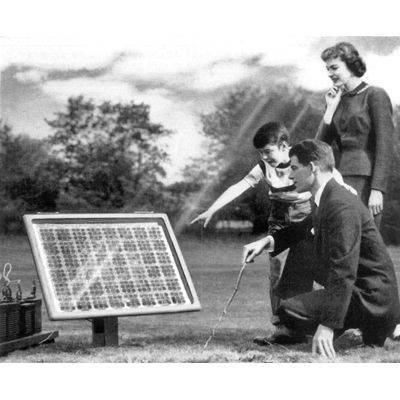First Solar Panel Invented Year

Courtesy of john perlin take a light step back to 1883 when new york inventor charles fritts created the first.
First solar panel invented year. In a way many physicists played a part in solar cell invention. Almost 50 years after the photovoltaic effect s discovery in 1883 american inventor charles fritz created the first working selenium solar cell 3though we use silicon in cells for modern solar panels this solar cell was a major precursor to the technology used today. The first working solar panels. However fritts thought that his solar cells were revolutionary.
He understood the benefits of solar energy predicting that solar panels would soon replace existing power stations. The 1950s 60s solar panels powered space exploration. Just 7 years later charles fritts an american inventor created the first solar cell by layering selenium onto a gold backing. Therefore the credit for the invention of the modern solar panel cannot go to a single individual entity.
The big break though came in 1876 when william grylls adams along with his student richard evans day discovered that selenium an element discovered in 1817 would create an electrical current when exposed to light. Therefore some consider the true invention of solar panels to be tied to daryl chapin calvin fuller and gerald pearson s creation of the silicon photovoltaic pv cell at bell labs in 1954. Charles fritts installed the first solar panels on new york city rooftop in 1884. While working on the coating of platinum electrodes using silver chloride he discovered a rise in voltage on exposure to light.
However solar cells as we know them today are made with silicon not selenium. It all started in 1839 with 19 year old physicist named edmond becquerel. In 1880 charles fritts used gold plated selenium to produce the first solar cell which also had an efficiency of 1. In 1954 the three american researchers gerald pearson calvin fuller and daryl chapin were able to create a solar panel that could the had the efficiency level of 6 with direct sunlight.
The efficiency of a solar panel continued to improve over the next few decades making solar panels a whole lot more affordable. Solar panels were able to help astronauts as they began exploring the final frontier. Scientists now know that collecting solar energy on a large scale is a real possibility.
















































